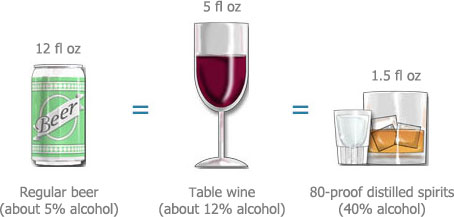Modified: June 8, 2016 5:09pm
Latest News

PRESS RELEASE
From the Office of the Commissioner of Health, Dr. Gale R. Burstein
Date June 8, 2016
CONTACT: Mary C. St. Mary/Mary.StMary@Erie.Gov
Phone: 716.858.4941/ Mobile: 716.253.3925
Alcohol and Teens—A Dangerous Combination
What Every Parent and Teen Should Know About Alcohol
ERIE COUNTY, NY—Summer brings graduation parties, picnics, camping trips and other outdoor activities—and in some cases the temptation for underageteens to illegally consume alcohol.
Adolescents who drink usually start with beer, wine or wine coolers, which many youngsters tend to guzzle like soda pop. Although many teenagers mistakenly believe that these drinks are “safer” than hard liquor, it’s the amount of alcohol you drink, not what you drink, that matters. Fact is, a twelve-ounce can of beer and a four-ounce glass of wine each has the same amount of alcohol as a shot of eighty-proof whiskey, and wine coolers have the same amount of alcohol as many beers.
As with any high-risk behavior, prevention is key. “Adolescence is a critical risk period for initiation of alcohol use. Earlier onset of drinking is associated with greater risk of developing alcohol abuse and dependence,” said Dr. Gale Burstein, Erie County Commissioner of Health. Among the numerous consequences of underage drinking are:
- School problems, such as higher absence and poor or failing grades
- Social problems, such as fighting and lack of participation in youth activities
- Legal problems, such as arrest for driving or physically hurting someone while drunk
- Physical problems, such as hangovers or illnesses
- Unwanted, unplanned, and unprotected sexual activity
- Disruption of normal growth and sexual development
- Physical and sexual assault
- Higher risk for suicide and homicide
- Death from alcohol poisoning
- Alcohol-related car crashes and other unintentional injuries, such as burns, falls, and drowning
- Memory problems
- Abuse of other drugs
- Changes in brain development that have life-long effects may occur
Burstein added, “Even small amounts of alcohol consumed can be dangerous for adolescents. Recent studies indicate that alcohol use during the adolescent period of brain development may interrupt key processes, possibly leading to cognitive impairment and an elevated risk of developing a chronic alcohol use disorder.”
Car crashes are just the most obvious of the adverse consequences of getting drunk. Statistics from the National Council on Alcoholism and Drug Dependence implicate alcohol use in about half of all sexual assaults involving adolescents and college students, including date rape. A frighteningly high proportion of teens—one in six—admit to having experienced alcohol-induced blackouts, where they could not recall the events of the previous evening.
Sexually active teens who overindulge are also less likely to protect themselves against pregnancy and sexually transmitted infections, for the simple reason that they are too besotted to take the necessary precautions before having intercourse. The fact that heavy drinking wears down the immune system adds to their risk of contracting a STI.
A point to impress upon teens: It is not just confirmed alcoholics who suffer the more harrowing repercussions of alcohol abuse. A single episode of reckless drinking can end in tragedy, as when a boy slides behind the steering wheel of a car while under the influence, or when an intoxicated young woman accepts an acquaintance’s offer to continue partying back at his apartment.
Alcohol is the most commonly used and abused drug among youth in the United States.
- Excessive drinking is responsible for more than 4,300 deaths among underage youth each year, and cost the U.S. $24 billion in economic costs in 2010.
- Although drinking by persons under the age of 21 is illegal, people aged 12 to 20 years drink 11% of all alcohol consumed in the United States. More than 90% of this alcohol is consumed in the form of binge drinks
- On average, underage drinkers consume more drinks per drinking occasion than adult drinkers.
- In 2010, there were approximately 189,000 emergency rooms visits by persons under age 21 for injuries and other conditions linked to alcohol.
# # #
For More Information:
Erie County Department of Health
Substance Abuse and Mental Health Service Administration. Talk. They Hear You.
U.S. Department of Health & Human Services: Office of Adolescent Health
Centers for Disease Control and Prevention: Underage Drinking
American Academy of Pediatrics
The Pennsylvania State University. A Parent Handbook for Talking With Adolescents About Alcohol.

